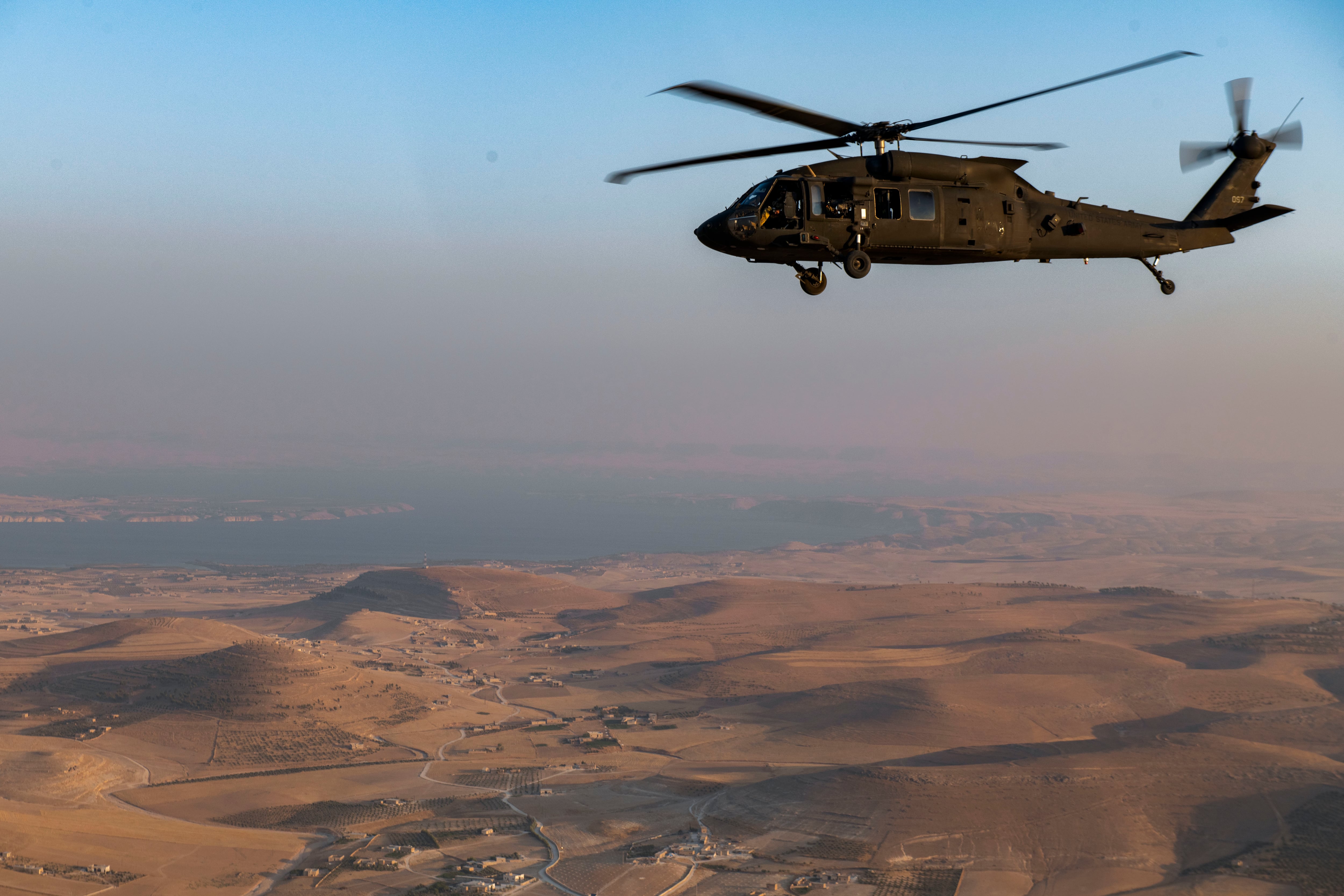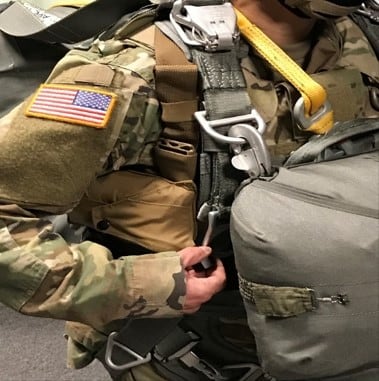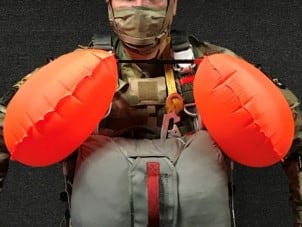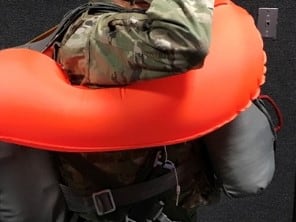Army aircrews are going to get a new combination of equipment and body armor that will be a third lighter, less bulkier and feature upgraded survival gear.
At the same time, prospective paratroopers will see a new chute on their training tower that more closely mimics the actual way they’ll drop from an aircraft.
Maj. Jeffery Timmick assistant product manager for air soldier systems and Capt. John Waters, APM for personnel airdrop, both spoke recently with Army Times about the new gear hitting the aircrew and airborne soldiers.
RELATED

Currently, aircrews have separate flexible body armor, combat equipment with onboard tethers, a built-in flotation device and survival gear.
Work being done at Air Warrior, the program that runs acquisition for all things aircrew, aims to cut the 30-pound load carrier and body armor devices by as much as 10 pounds while reducing the bulk by about 15%, Timmick said.

The major told Army Times that, currently, soldiers use body armor with no load carriage and on top of the armor, as well as a carrier with a harness system for extraction of downed crew members.
The new system will use the same inserts as the Modular Scalable Vest fielded in recent years to some Army units.
The devices will be a bit easier to put on since the load carrier and body armor will be combined into one system.
An updated quick-release tether system is also being redesigned for use with the total package.

A still in-the-works design will also move the current flotation system from inflating under the soldier’s head and instead go buoyant across the chest removing field of view and head movement issues with the current system.
Timmick said that the program plans to conduct operational tests with 25th Combat Aviation Brigade in the latter part of 2023.
For future paratroopers, a decades-old training parachute is leaping into the 21st Century when the 250-foot drop tower at Fort Benning, Georgia’s Airborne School gets the new J3 parachute system.

That’s where airborne-in-training soldiers conduct their “parachute landing fall” under canopy similar to what they’ll face when falling from an airplane later in training.
Upgrades to the static line parachutes over the years have outpaced the ability of the legacy training parachute.
Waters told Army Times that the J3 uses newer materials but has the same design and circular shape.

The difference might sound small but the T11 parachute falls at a rate of about 18.5 feet per second. The training chutes can take as long as 24 seconds. Those 5.5 seconds mean a bit of a different experience under canopy.
“For that fall rate we wanted to mimic what (the trainee) is currently seeing,” Waters said.

Paratroopers will also see an updated flotation device. Exact fielding dates were not immediately available.
The device will still be CO2-cartridge-based and require jumpers to manually initiate the device.
But the design, which previously only kept the head above water will also now include two bladders beneath the user’s armpits to elevate their bodies further out of the water, Waters said.
Todd South has written about crime, courts, government and the military for multiple publications since 2004 and was named a 2014 Pulitzer finalist for a co-written project on witness intimidation. Todd is a Marine veteran of the Iraq War.




